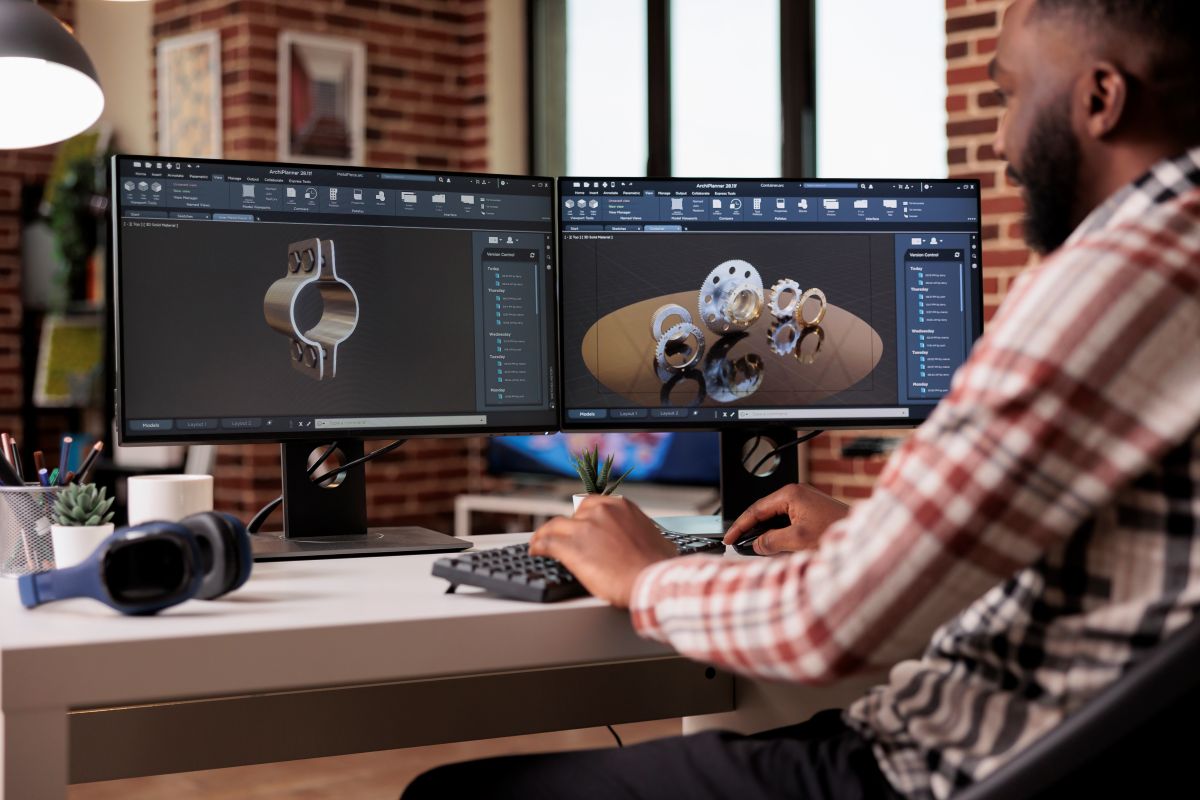
Animation Studio in South Africa: 3D Visualisation
Let’s be honest, technical systems are not always the easiest thing to wrap your head around. Between the pipes, gears, wiring, and functions, explaining how something works can start to feel like reading a novel written in a foreign language. This is where 3D visualisation makes things easier. Whether it is a complex HVAC system, an assembly line, or a medical device, being able to see how something functions makes it far more approachable. You are not left squinting at diagrams or lost in jargon; instead, you get a visual explanation that makes sense at a glance—or at least faster than reading a technical manual twice over. This article explores how 3D visualisation helps make technical systems easier to understand, maintain, and explain. From product development to training and maintenance, it has become a reliable method for turning complicated information into something far more manageable. An animation studio in South Africa can support this process by producing detailed, accurate animations that make even the most complex systems clearer to navigate.
Understanding 3D Visualisation in Technical Contexts
At its core, 3D visualisation refers to the use of three-dimensional graphics to represent systems or processes. It is more than just a pretty picture—these models serve as visual aids to help explain how something works, whether through a static image or an interactive animation. 3D visualisation can be used in various contexts, from product design and development to complex system analysis, and it is especially valuable in technical fields where comprehension of intricate details is paramount.
The magic of 3D visualisation lies in its ability to go beyond mere aesthetics. While it may appear artistic at first glance, these visuals serve a deeper purpose—helping viewers to interact with and understand complex systems. Whether it is through exploded views that break down a system’s components or animations that show how parts move and interact, these visualisations offer clear insights that words alone might struggle to convey.
Real-World Applications of 3D Visualisation
Product Design and Development
One of the most significant advantages of 3D visualisation is its role in product design and development. Creating 3D models of products and systems before physical prototypes are built can save considerable time and resources. Companies can evaluate different design iterations, test functionality, and even simulate how a product will be used in real-world scenarios. For businesses in industries like automotive, aerospace, and electronics, 3D models can provide the insight needed to refine and perfect designs, all while reducing the need for costly physical testing.
An animation studio in South Africa can play an essential role here, working with engineers and designers to create detailed, interactive visualisations of products that facilitate decision-making and collaboration throughout the development process.
Training and Education
Another significant area where 3D visualisation has proven invaluable is in training and education. By using 3D models in training programmes, businesses can provide their employees or clients with immersive learning experiences. This is particularly beneficial in industries like healthcare, where professionals need to understand complex medical procedures or the inner workings of complicated medical equipment. With 3D models, trainees can interact with systems in a way that allows them to explore all components and understand how they fit together.
For example, imagine an engineer learning how to repair a piece of machinery. A 3D animation could allow them to see how the parts move in real-time, showing them exactly where to make adjustments without having to physically interact with the equipment. An animation studio in South Africa can collaborate with industry experts to create these educational tools, enhancing learning experiences and boosting knowledge retention.
Maintenance and Repair
When it comes to maintaining and repairing systems, having access to 3D visualisations can save businesses both time and money. Maintenance professionals often deal with complex systems that require a deep understanding of how individual components work together. With 3D models, technicians can quickly identify problem areas and make precise repairs, improving both the speed and accuracy of the work.
An animation studio in South Africa can create detailed, animated tutorials that walk maintenance teams through troubleshooting and repairs. By allowing technicians to visualise how systems break down and come back together, these models ensure repairs are done more efficiently and effectively.
Marketing and Client Engagement
In product-driven sectors, explaining how something works can be more persuasive than a stack of brochures. When clients are trying to understand how a product fits into their world—not just what it looks like—a 3D visualisation steps in with the kind of clarity that still images or text usually cannot manage.
Instead of imagining how a piece of equipment fits into a workflow or how a product functions under pressure, clients can see it. Movement, scale, and real-time interactions help unpack the details that matter. This becomes especially useful during pitches, proposals, or product launches where the usual sales material might not cut it.
An animation studio in South Africa can support these efforts by creating visuals that are accurate, on-message, and built to explain rather than impress for the sake of it. The result is not flash for the sake of flash—it is about making sure the right people understand what a product does and why it is worth paying attention to.
Innovative Uses of 3D Visualisation
Digital Twins
One of the more innovative uses of 3D visualisation in recent years is the concept of digital twins. A digital twin is a virtual replica of a physical system that is used for monitoring, testing, and optimising real-world systems. This technology is particularly useful in industries like manufacturing, energy, and infrastructure. By creating a digital twin, businesses can track real-time data from their physical assets and simulate potential scenarios to predict future outcomes or issues.
An animation studio in South Africa can create these complex, dynamic digital twins, helping companies monitor their systems more effectively and make proactive adjustments before problems occur.
Augmented Reality (AR) and Virtual Reality (VR)
Another exciting frontier for 3D visualisation is the integration of augmented reality (AR) and virtual reality (VR) technologies. When combined with 3D models, AR and VR can create immersive environments where users can interact with a system as if it were real. This can be particularly helpful for tasks like training, system design, and product demonstrations.
With the help of an animation studio in South Africa, businesses can create AR and VR experiences that allow users to explore 3D models in new and innovative ways. Whether it is simulating a factory floor or giving a client a virtual tour of a building, these technologies open up exciting new possibilities for interaction and engagement.
Predictive Maintenance
One of the more advanced applications of 3D visualisation is in predictive maintenance. By creating 3D simulations of a system’s components and behaviour over time, businesses can forecast when a part is likely to fail and take preventive action before it becomes a costly issue. This can save companies money in the long run by reducing downtime and preventing unplanned repairs.
With the expertise of an animation studio in South Africa, businesses can develop these predictive models, which are crucial for industries where system uptime is critical, such as manufacturing and energy.
Sustainability Modelling
Focused efforts around sustainability have led to increased use of 3D visualisation to model environmental impact and test system efficiency. By simulating how different systems affect the environment, businesses can optimise their operations to minimise waste, reduce energy consumption, and lower emissions. This is especially important in industries like construction, energy, and manufacturing, where sustainability goals are often a top priority.
An animation studio in South Africa can help businesses model these systems visually, allowing them to assess their environmental impact and make informed decisions about how to improve sustainability.
Industry-Specific Applications
Different industries rely on 3D visualisation in unique ways to address their specific needs. Whether it is in manufacturing, healthcare, energy, or architecture, each sector benefits from having an accurate and engaging representation of its systems.
For example, in manufacturing, 3D visualisations are used for assembly line design and optimisation, reducing the need for trial and error in the physical world. In healthcare, medical professionals use 3D models for surgical planning and education, helping patients and doctors alike understand procedures better. In energy, companies use 3D models for infrastructure planning, allowing them to visualise how their systems will perform under different conditions. In architecture, 3D visualisations help architects and clients alike view and modify designs before construction begins.
An animation studio in South Africa plays a vital role in helping these industries produce high-quality 3D models that communicate technical information effectively.
Conclusion
There is no shortage of technical systems out there that are difficult to explain without a whiteboard and twenty minutes to spare. 3D visualisation changes that. It offers a smarter way to unpack how things work, what they are made of, and why they matter.
Whether it is helping engineers understand a layout before anything is built, showing technicians how to fix what is broken, or giving clients a clear picture of what they are buying into, this kind of animation earns its place. And when it is done right, it does more than explain—it helps people make better decisions faster.
An animation studio in South Africa can support this kind of work by translating technical information into visuals that are both accurate and clear. This includes everything from modelling individual components with precision to animating their function in a way that speaks directly to engineers, clients, or decision-makers—whoever needs to understand what is going on, without sitting through a technical lecture.
Got a complex system that needs a little deconstruction? Let’s turn it into something everyone can understand. Contact Sound Idea Digital today and see how we can help you present your technical ideas clearly and effectively.
We are a full-service Web Development and Content Production Agency in Gauteng specialising in Video Production, Animation, eLearning Content Development, Learning Management Systems, and Content Production.
Contact us for a quote. | enquiries@soundidea.co.za | https://www.soundideavideoproduction.co.za| +27 82 491 5824 |


Pingback: Animation Companies Cape Town: What is Product Animation? - SID Video